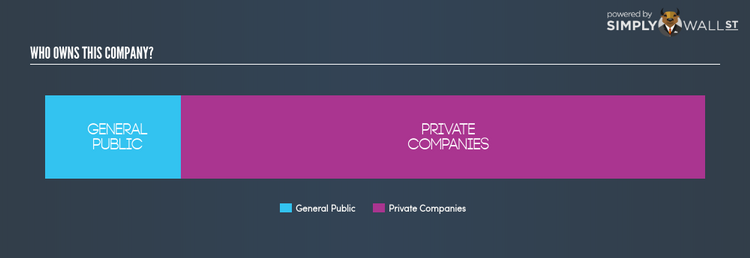What Does Damf Inwestycje SA.’s (WSE:DIN) Ownership Structure Look Like?

In this article, I will take a quick look at Damf Inwestycje SA.’s (WSE:DIN) recent ownership structure – an unconventional investing subject, but an important one. When it comes to ownership structure of a company, the impact has been observed in both the long-and short-term performance of shares. Since the effect of an active institutional investor with a similar ownership as a passive pension-fund can be vastly different on a company’s corporate governance and accountability of shareholders, investors should take a closer look at DIN’s shareholder registry.
Check out our latest analysis for Damf Inwestycje
General Public Ownership
The general public holds a substantial 20.68% stake in DIN, making it a highly popular stock among retail investors. This size of ownership gives retail investors collective power in deciding on major policy decisions such as executive compensation, appointment of directors and acquisitions of businesses. This level of ownership gives retail investors the power to sway key policy decisions such as board composition, executive compensation, and potential acquisitions. This is a positive sign for an investor who wants to be involved in key decision-making of the company.
Private Company Ownership
Potential investors in DIN should also look at another important group of investors: private companies, with a stake of 79.32%, who are primarily invested because of strategic and capital gain interests. An ownership of this size indicates a strong financial backing and has the potential to influence DIN’s business strategy. Thus, investors should dig deeper into DIN’s business relations with these companies and how it can affect shareholder returns in the long-term.
Next Steps:
A large shareholding of DIN by the general public could mean higher market liquidity to buy and sell shares for retail investors, and also the potential to have more influence over company policies as a collective. However, ownership structure should not be the only determining factor when you’re building an investment thesis for DIN. Rather, you should be examining fundamental factors such as the intrinsic valuation, which is a key driver of Damf Inwestycje’s share price. I highly recommend you to complete your research by taking a look at the following:
Financial Health: Is DIN’s operations financially sustainable? Balance sheets can be hard to analyze, which is why we’ve done it for you. Check out our financial health checks here.
Past Track Record: Has DIN been consistently performing well irrespective of the ups and downs in the market? Go into more detail in the past performance analysis and take a look at the free visual representations of DIN’s historicals for more clarity.
Other High-Performing Stocks: Are there other stocks that provide better prospects with proven track records? Explore our free list of these great stocks here.
NB: Figures in this article are calculated using data from the last twelve months, which refer to the 12-month period ending on the last date of the month the financial statement is dated. This may not be consistent with full year annual report figures.
To help readers see pass the short term volatility of the financial market, we aim to bring you a long-term focused research analysis purely driven by fundamental data. Note that our analysis does not factor in the latest price sensitive company announcements.
The author is an independent contributor and at the time of publication had no position in the stocks mentioned.

